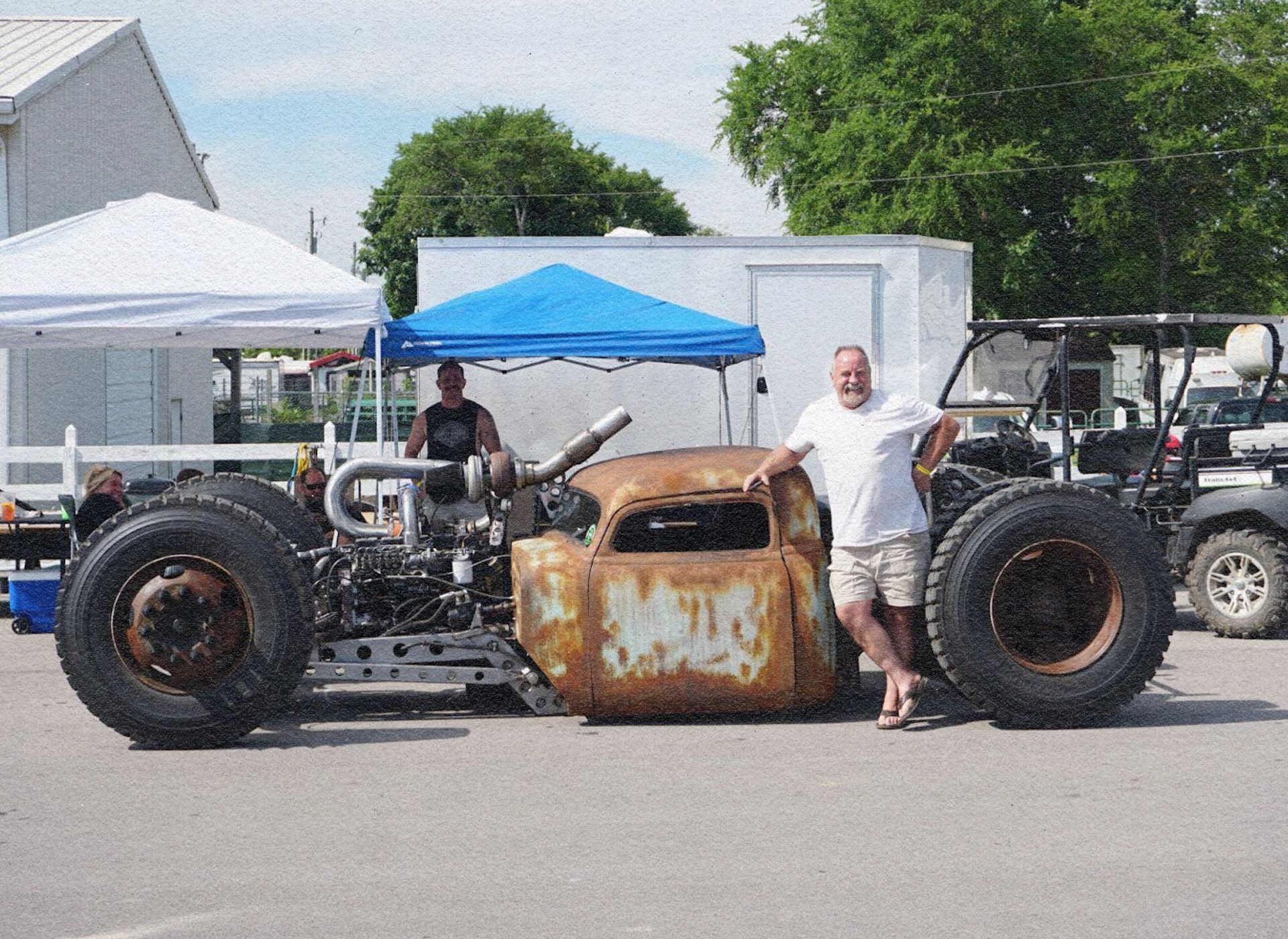
The Redneck Rumble
A hub of mechanic trade and Rat Rods
A middle-aged man donning a rat tail and wearing a purple tank top, black shorts, and matching leather lace-up boots, pulls a child’s wagon – a Radio Flyer, no less - among piles of deceased automobile’s innards, picking through metallic junk for any that might still have juice. Finding a turbo, and shelling out cash, he tosses the loot atop his own growing pile of parts and rolls on. Sam hails from East Tennessee. His driveway has seen both mechanical wizardry and disaster and he’s got great stories if you can get him to tone down the tangled web of gearhead jargon. Sam is at the Lebanon Fairgrounds for the Redneck Rumble, one of the biggest in an annual circuit of car part bazaars in the South hosting two thousand or so tinkerers. Most are small business owners and family men. Some sell cars; some sell car parts; some show off custom-built vehicles called Rat Rods. And on June 11th, all were in good spirits.
Inside the grounds, little mulleted hellions dart around on makeshift carts and bikes with the seriousness of a Formula One driver. A newcomer might feel compelled to constantly look about and move out of their way to avoid a collision, but the experienced Rumble goers let the chaos bend around them. With my attention split between the careening cart-boys and the tables of arranged junk, I spotted my prize, a “Daytona Bike Week ‘96” VHS tape — a sample of the madness that was pre-cellphone biker parties.
Buford, who came to the Rumble from Spring City, TN, had the biggest, baddest, and most Mad Max Rat Rod of the bunch (pictured up top). He built a custom frame, took the rear axle from a semi, dropped in an 8-cylinder diesel engine, threw on huge off-roading tires, and routed the exhaust over the center of the hood like a mohawk. Buford owns a paint and body shop and builds rat rods in his free time. The Terror Mobile has a license plate with the antique designation, even though the body - from a 1940’s Ford truck — is the only antique piece of the vehicle. When asked about it, Buford waxes philosophical, “Where I come from, they don’t give a shit.”
The theme of the market is conservation: building cars from scrap and selling and reusing parts rather than tossing them. People are hanging on to older vehicles for as long as possible in the face of the bleak, modern car market, but aside from that, it’s simply how sensible rural people operate. When there isn’t a mechanic shop in your immediate vicinity, you’re the mechanic. If you live in isolation, every piece of material has more value. In contrast, the excesses of the city allow its people to replace things without much question. Many urbanites play at conservation by crafting, recycling waste, or thrift shopping, but replacing remains their way of living sensibly. They replace the gas guzzler with a higher gas mileage car, replace that with an electric vehicle, replace 20th century homes with something cheaper and more efficient, and replace the means of energy production in the country, for that matter, all while not bothering to realize no one can actually save resources in this way. They’re only rearranged, at best.
This group is impervious to progressive gobbledegook. If you told Rumble vendor Ernest Pyzocha of Rineyville, Kentucky, who owns a sandblasting company and a Ford Model A museum that, for the sake of the earth, he should replace his 1987 F150 – which he can tear apart and rebuild in his garage – with a complex truck built overseas, he would laugh in your face. The progressives know this. So rather than confronting him, they’ll just hike gas prices to historic highs and hope they force a decision out of him.

